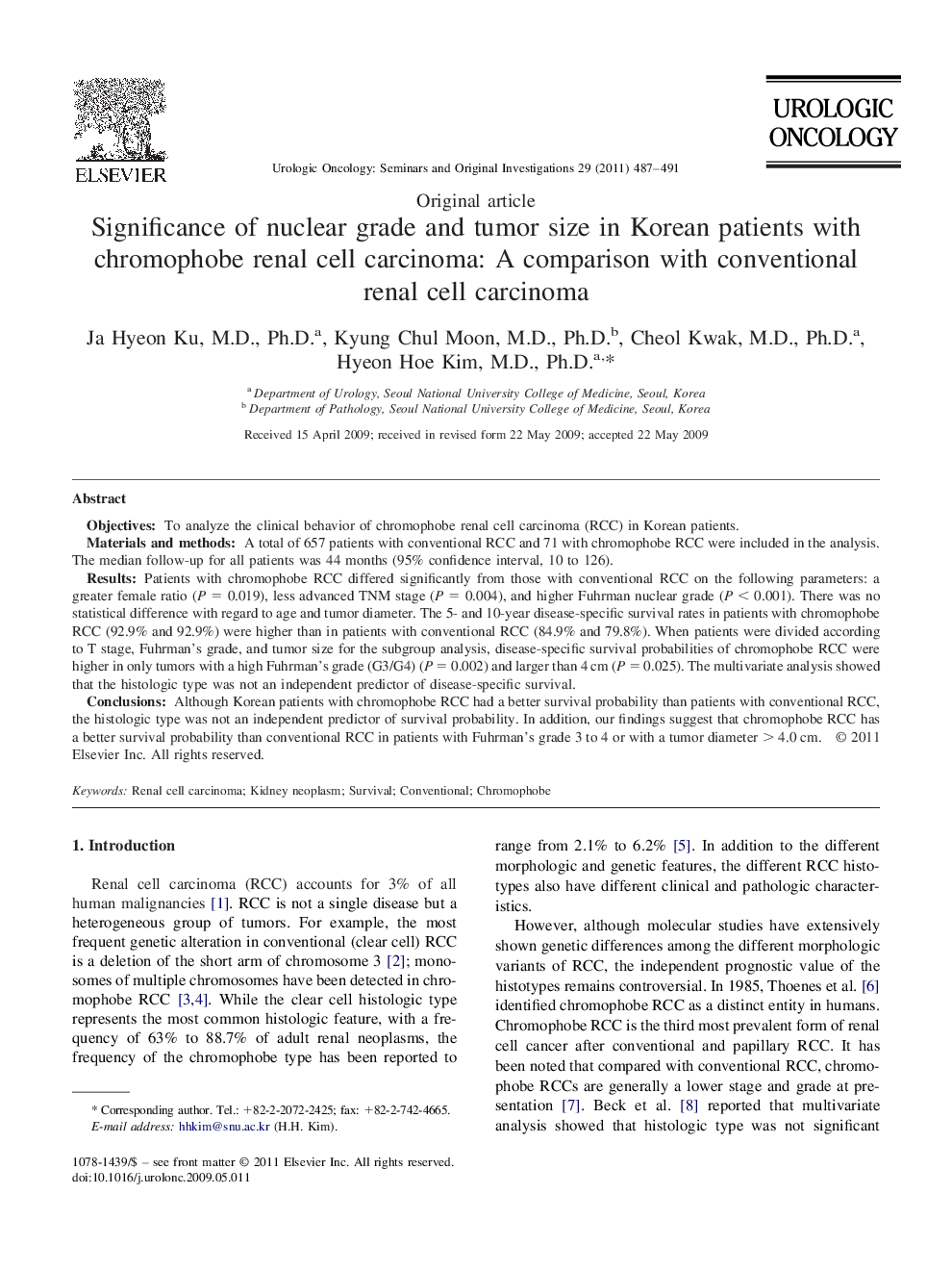| Article ID | Journal | Published Year | Pages | File Type |
|---|---|---|---|---|
| 4000497 | Urologic Oncology: Seminars and Original Investigations | 2011 | 5 Pages |
ObjectivesTo analyze the clinical behavior of chromophobe renal cell carcinoma (RCC) in Korean patients.Materials and methodsA total of 657 patients with conventional RCC and 71 with chromophobe RCC were included in the analysis. The median follow-up for all patients was 44 months (95% confidence interval, 10 to 126).ResultsPatients with chromophobe RCC differed significantly from those with conventional RCC on the following parameters: a greater female ratio (P = 0.019), less advanced TNM stage (P = 0.004), and higher Fuhrman nuclear grade (P < 0.001). There was no statistical difference with regard to age and tumor diameter. The 5- and 10-year disease-specific survival rates in patients with chromophobe RCC (92.9% and 92.9%) were higher than in patients with conventional RCC (84.9% and 79.8%). When patients were divided according to T stage, Fuhrman's grade, and tumor size for the subgroup analysis, disease-specific survival probabilities of chromophobe RCC were higher in only tumors with a high Fuhrman's grade (G3/G4) (P = 0.002) and larger than 4 cm (P = 0.025). The multivariate analysis showed that the histologic type was not an independent predictor of disease-specific survival.ConclusionsAlthough Korean patients with chromophobe RCC had a better survival probability than patients with conventional RCC, the histologic type was not an independent predictor of survival probability. In addition, our findings suggest that chromophobe RCC has a better survival probability than conventional RCC in patients with Fuhrman's grade 3 to 4 or with a tumor diameter > 4.0 cm.
